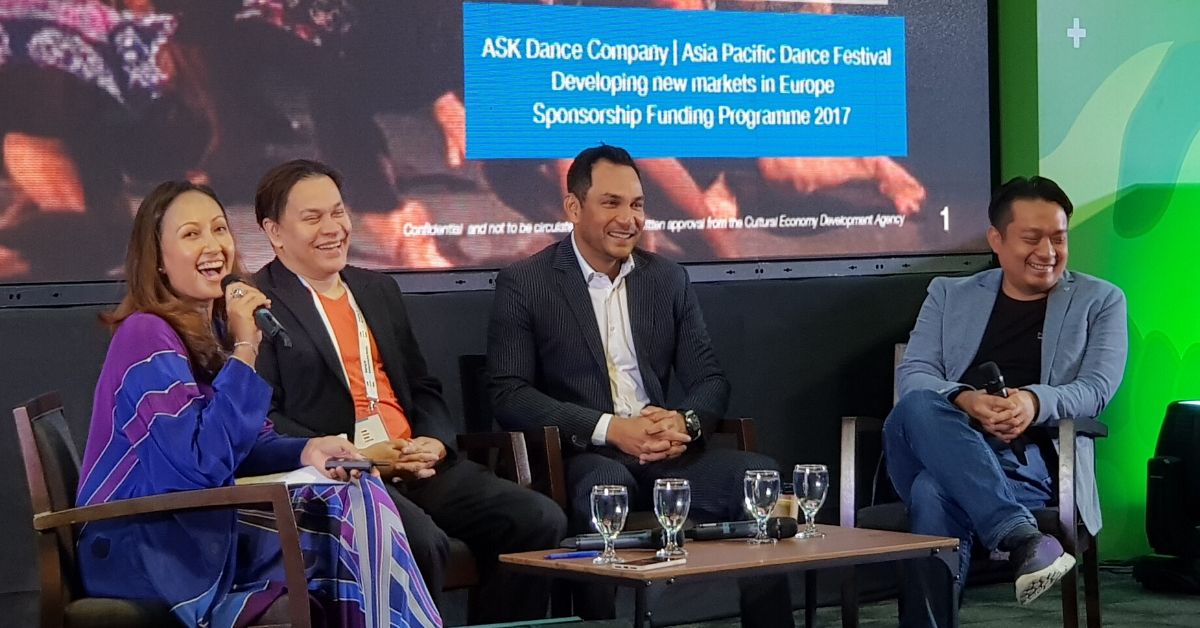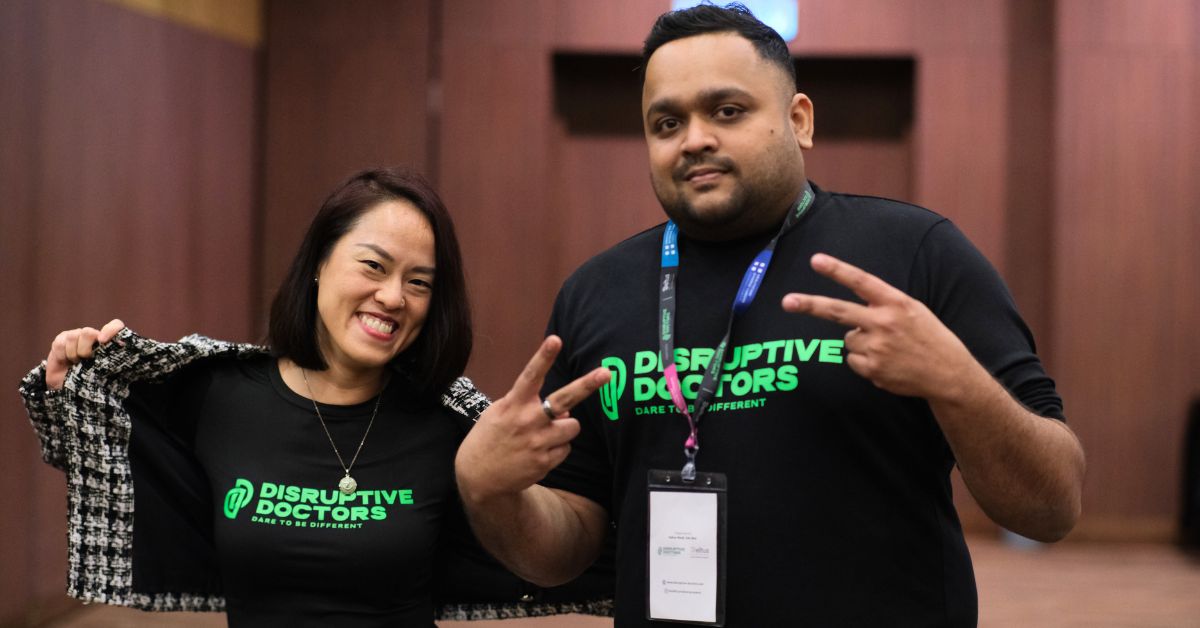This article series is in conjunction with Entrepreneurial Nation (E-Nation) Symposium, a 4-day event at MaGIC with the theme “Shaping An Entrepreneurial Nation”. The event will cut across 6 main pillars (Creative, Corporate Innovation, Education, Entrepreneurship, Policy and Social Entrepreneurship), with the objectives to:
1) bridge ecosystem players together to exchange ideas, promote collaboration and foster networking opportunities;
2) highlight recent entrepreneurial initiatives;
3) gather influential entrepreneurs and speakers to share rich knowledge and information to attendees;
4) promote the concept of social innovation and social responsibility to encourage the adoption and understanding of the conscious entrepreneurship concept.
This article is in line with the Creative pillar.
At a panel in E-Nation moderated by Izan Satrina Dato Sallehuddin, founding CEO of Cultural Economy Development Agency (CENDANA), we heard from 3 experts from the creative industry:
- Dato’ Hans Isaac – Chairman of the National Film Development Corporation Malaysia (FINAS)
- Mohd Nizam Abd Razak – CEO of Animonsta Studios
- Dato’ Norman Abdul Halim – Executive President and Group CEO of KRU Studios
They shared some personal stories on how they got to where they are today and some advice for people thinking to jump into the creative industry, or those who are already in it.
1. Never underestimate small beginnings
You may know Animonsta because of their hit characters from BoBoiBoy.
But it all started from just a small dream.
Back in university, Nizam and his team came up with a project called Misi Mustahak.
With just 7 minutes of animation, they were able to make a crowd of 300 people laugh and enjoy themselves.
“If we can make these people laugh with our storytelling and animation, why not the entire nation? Why not from 300 to 30 million? Why not to 300 million in Southeast Asia? Obviously we have to take these small steps to bigger steps later on,” he shared.
So he and his friends created Animonsta, with a focus on superheroes instead of traditional characters. Back in 2009, they rented an apartment in Bukit Jelutong which was small and hot because they had 7 computers running.
“Memang panas, pasang air-con pun tak cukup!” he remarked to the crowd.
(Translation: “It was definitely hot, having the air-conditioning on wasn’t enough!”)
BoBoiBoy was birthed around then, and in 2010, MDEC gave them a helping hand with a grant and ample space to focus on creating.
Just recently, BoBoiBoy Movie 2 raked in RM30 million in box office revenue throughout Malaysia, Singapore and Brunei.
2. Times will change, and so should your business
Many Malaysians above the age of 25 would have fond memories of growing up with KRU‘s music. Or you might have heard of a movie series they produced, Cicak Man. What we might not know is that KRU was started in 1992 with just RM2,000.
Norman also said they had to reinvent the company four times and they’re in the midst of reinventing themselves for the 5th time.
“Business models and environment change all the time, we just have to adapt and face all those challenges. Instead of complaining about it, roll up your sleeves and solve the problem and move forward. If you have your fundamentals in the right place and work towards your goal, you’ll be able to achieve whatever objectives you have.”

Norman gave the example of animation, and how easy it is to adapt and localise. “When you release an animated film in Poland, dub it in Polish,” he said.
He also called for people to create characters that are relatable to the audience and for the creators to “act local, think global.” You can create content that can appeal to the local market and international market. What really matters is the storytelling or the core of the content.
Having a good character backstory is also important when it comes to creating characters.
“If you have a great character design but the story sucks, it won’t travel,” Hans chimed in.
3. Don’t go alone
Hans was on hand to re-emphasise that FINAS is here to help creatives to synergise with companies and to bring people together.
“We’re not here to tell you what to do or tell you what story you want to tell. In today’s world, if any company works with FINAS, there are always bigger opportunities out there. We can’t stand alone.” said Hans.
He then continued to explain that FINAS is not there to make a profit but to give others investment opportunities to facilitate the creative industry.
He also called for the seniors in the industry to give chance to the newcomers and the newcomers to listen to the seniors because they have the experience.
4. Copyright and trademark will hurt you if you don’t handle them right
All three panellists agreed that building your own brand is important.
Nizam said that creating and holding on to one IP now is okay. With the right followers, you might be able to earn more, in 10 or 20 years down the road.
“Disney purchasing Fox or a franchise like Star Wars, you’re not just buying the IP, you’re buying the fans,” he said.
Owning your IP and copyright is massively important too. Hans said if you face copyright infringement, it might kill your business. He hinted that the government is working on a new way to detect copyright infringement to help the IP holders.
They also said that content doesn’t necessarily have to be expensive.
“You can sell your content by setting up two webcams and just recording yourself singing in the car,” said Norman.

5. Work together, but learn to be independent
Nizam opined that while the government is doing a lot to help out, creatives should learn to be independent.
“We always have these grants from the government. But sometimes, it diminishes the potential of the creative industry. We’re too dependent on these grants. We’re not thinking of a business plan,” he said.
He took a grant for the first season of BoBoiBoy but declined to take a grant for season 2, because he noted the company would not be able to stand alone if they’re too dependent on grants.
“To maximise the potential of the creative industry, the government can help them, but they also need to develop a system to not give them [the creatives] whatever they want,” he said.
6. Don’t just focus on being “jaguh kampung”
Hans once posed a question to Hollywood directors on why Malaysian content can’t move out of Malaysia, and they replied saying it’s the problem with language barriers.
“The [local] language works for a certain point in the market, but it won’t work internationally,” said Hans.
An animation can cross countries because it can be dubbed at a very affordable cost. When you do, you have the option to sell to other markets.
All three agreed that quite a few creators in Malaysia have reached the top of their game locally. Now it’s time to look beyond Malaysia’s borders.
Closing Thoughts
Norman ended the panel by saying that creators should look towards utilising the technology of I R 4.0. He said the move to digital is massive and that the platform now allows for better technology for creation.
Hans then said that creators also should learn how to pitch their business plan better. “Your story is your business plan. When you pitch the story, you have to get the investors interested in your story. If they’re not interested, they’re not gonna invest. Learn how to pitch.”
- You can read more on what we’ve written about MaGIC here.









